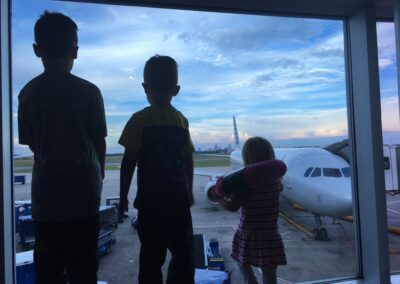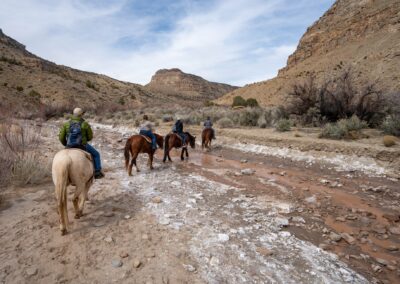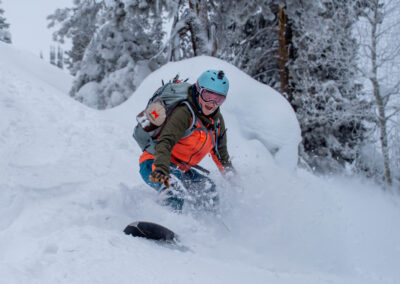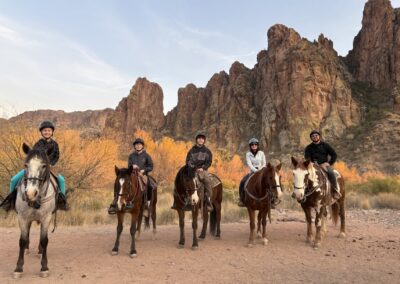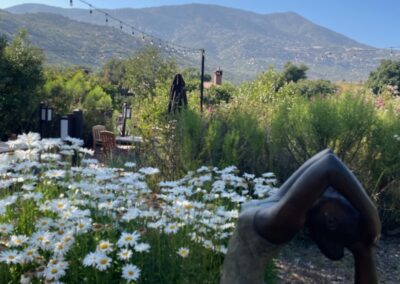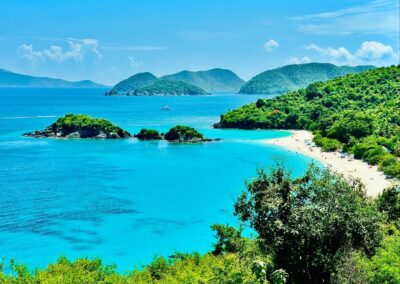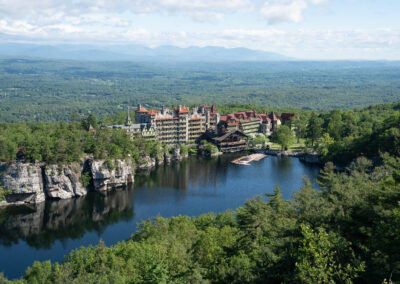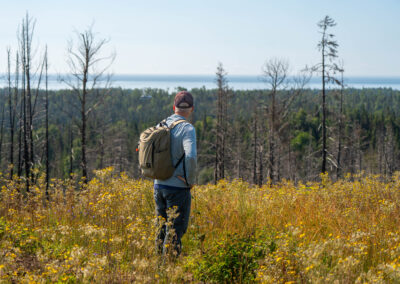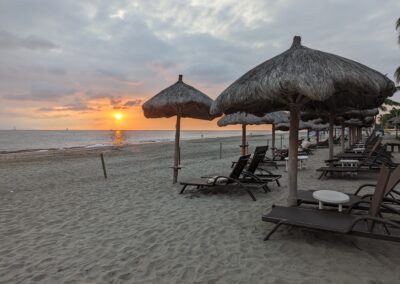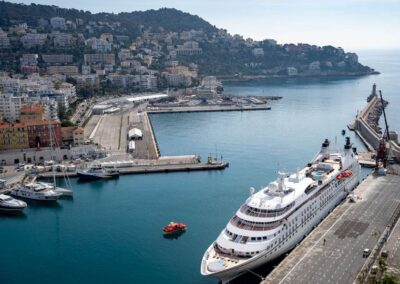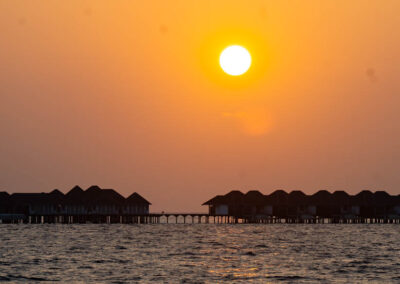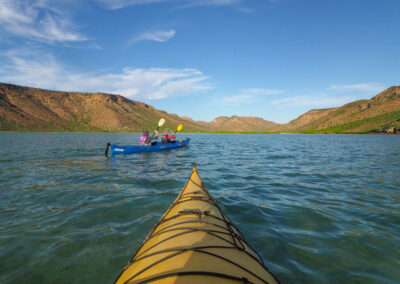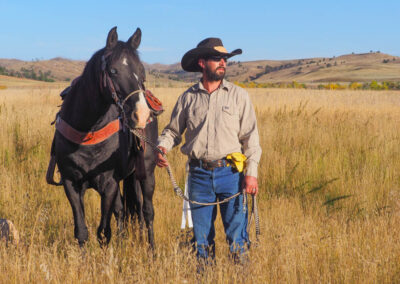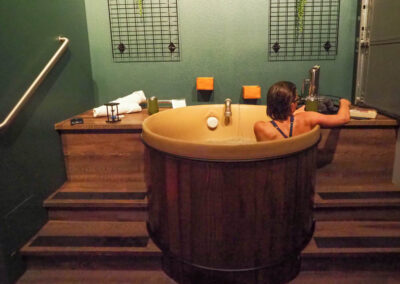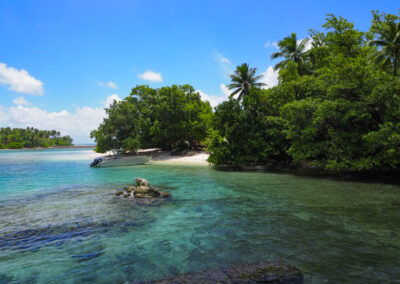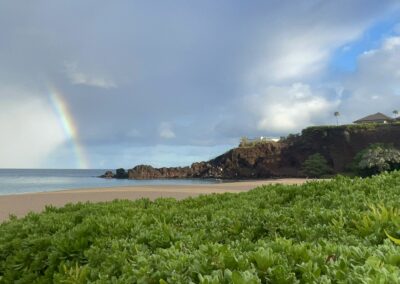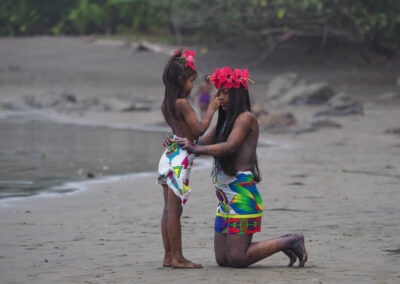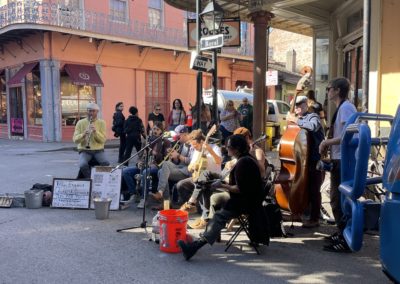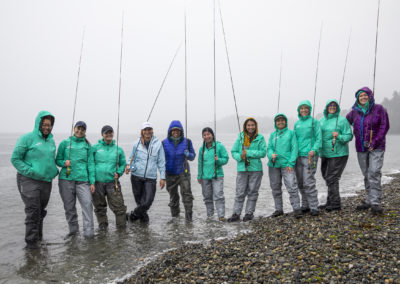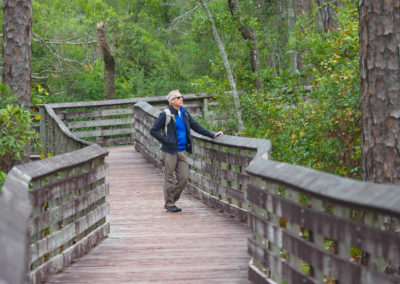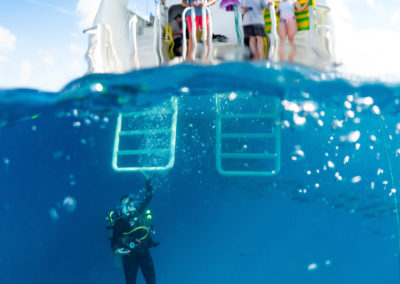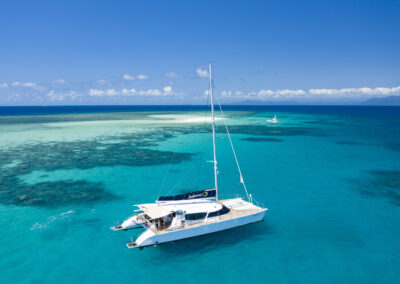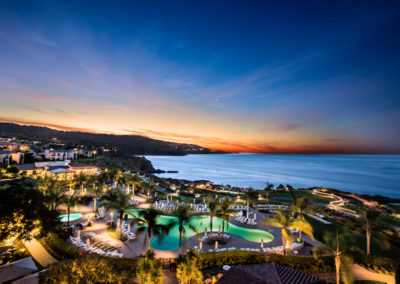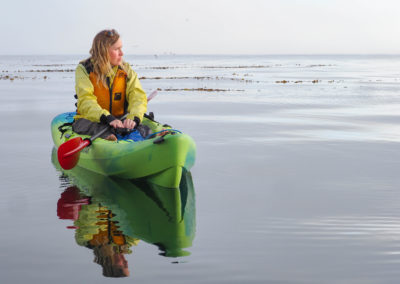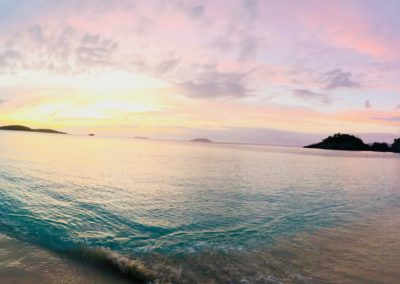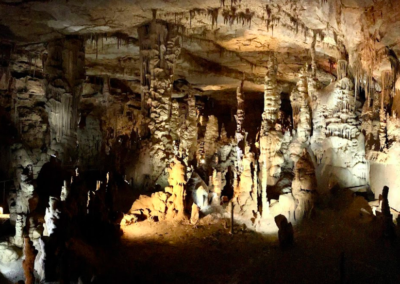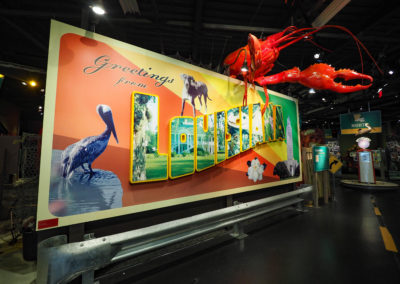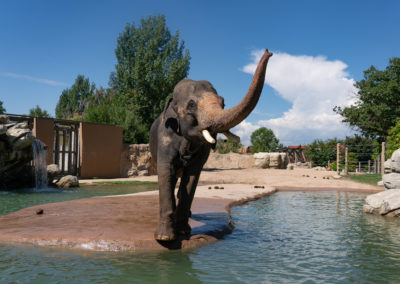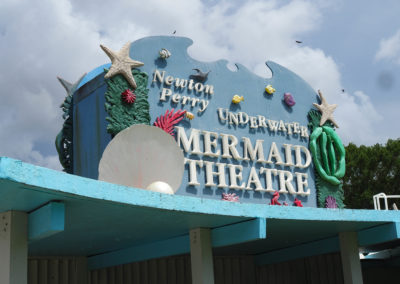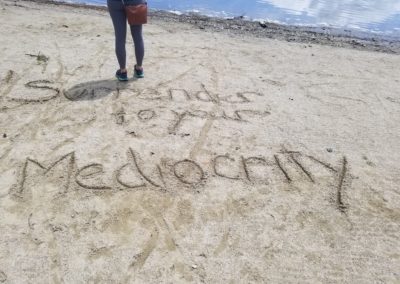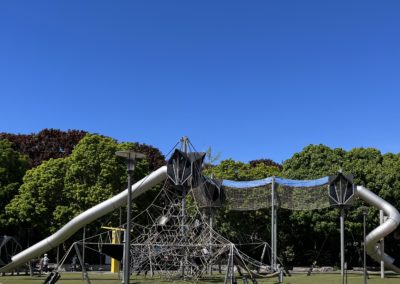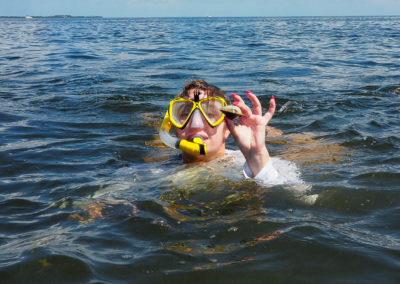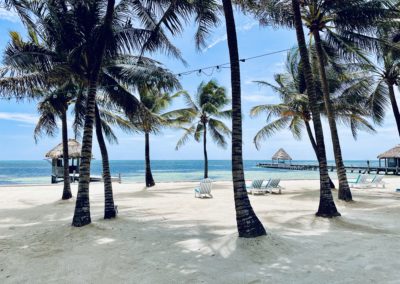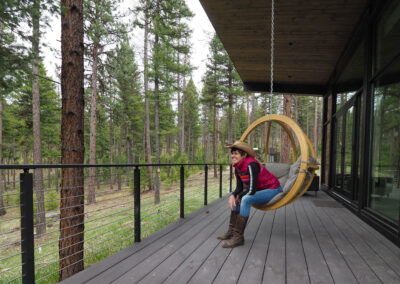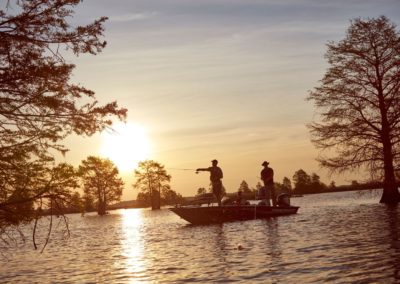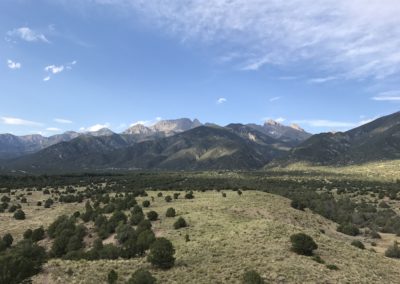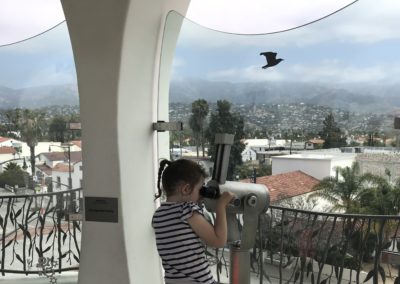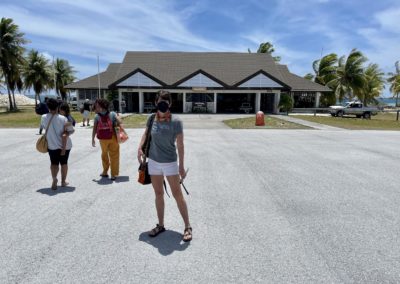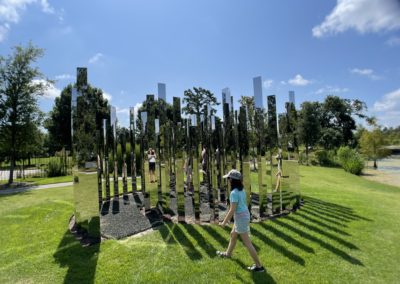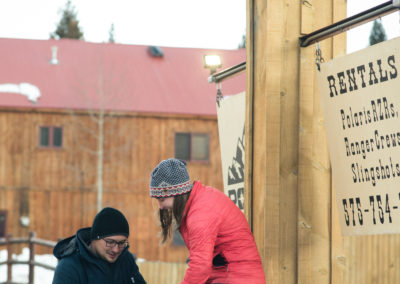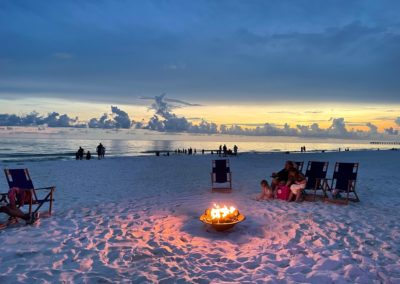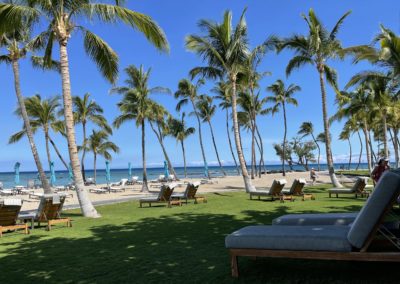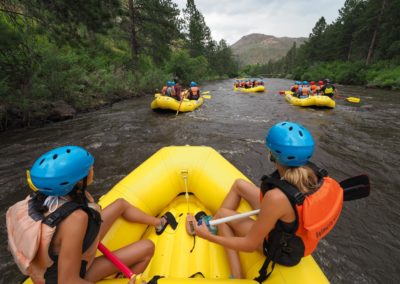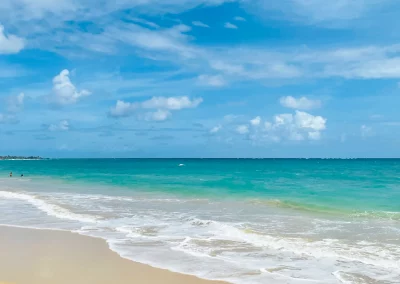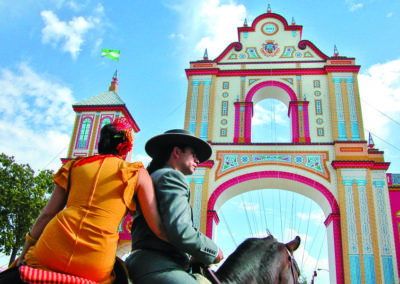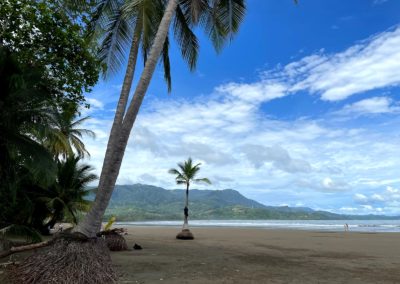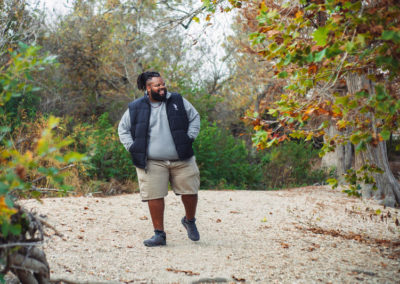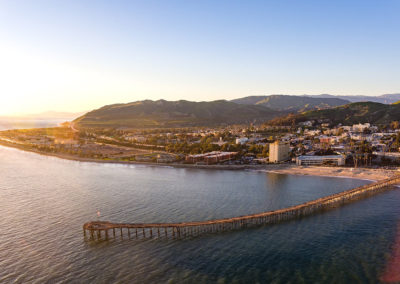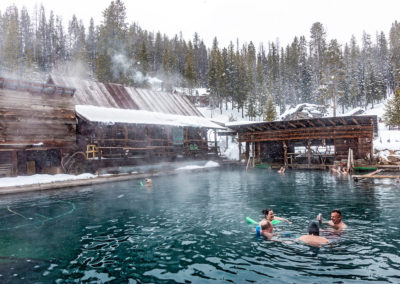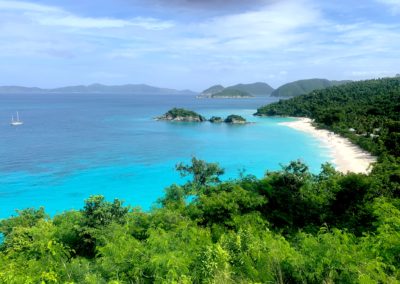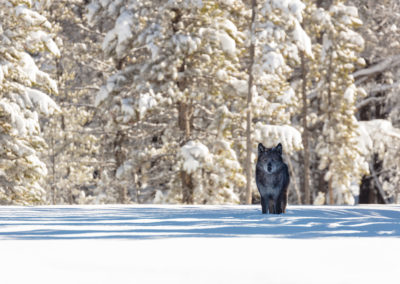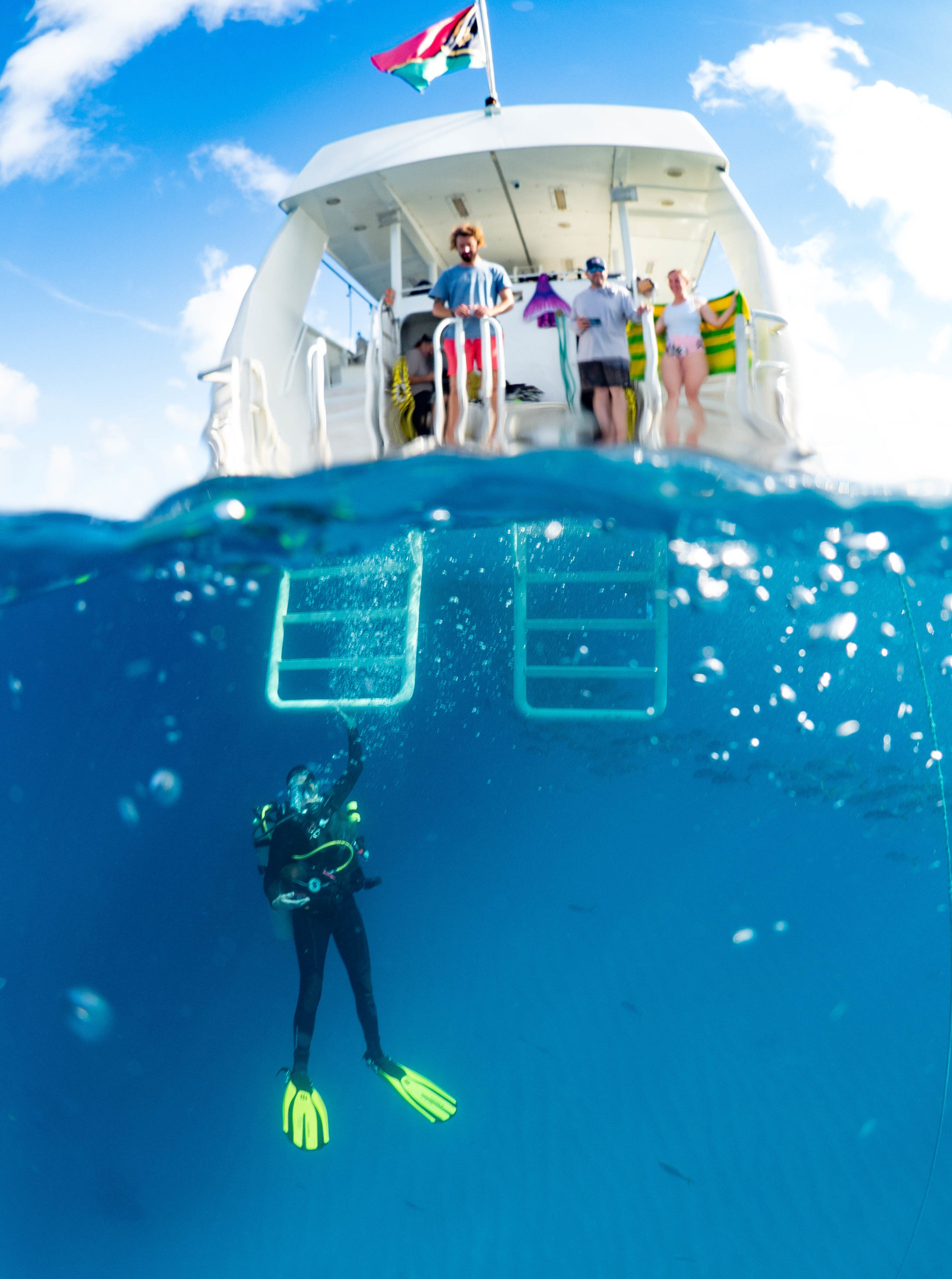
Pam LeBlanc hangs just below the Turks and Caicos Explorer II dive boat. Chris LeBlanc photo
Almost immediately after jumping into the ocean after dark, I begin to regret my decision.
But here I am, bobbing at the surface of the sea, just off the Turks and Caicos Islands, fully aware that sharks are feeding below.
Still, it feels peaceful. Stars twinkle in the sky and water laps against my shoulders. A blinking red light dangles from the tank of air strapped to my back, and I’m holding a flashlight. Besides, I know that sharks are more interested in eating bite-sized critters than full-grown humans.
When the dive master gives the signal to descend, our group of four drops into the darkness. My heart rate slows a little, and I start to peer into the gloom.
Sharks in the Turks and Caicos Islands
At first, I see the usual cast of characters of any night dive –– jacks the size of dinner plates and schools of palm-sized fish.
Then I look straight down. The beam of my flashlight cuts through the inky blackness, illuminating more than a dozen apex predators, some of them approaching 9 feet long.
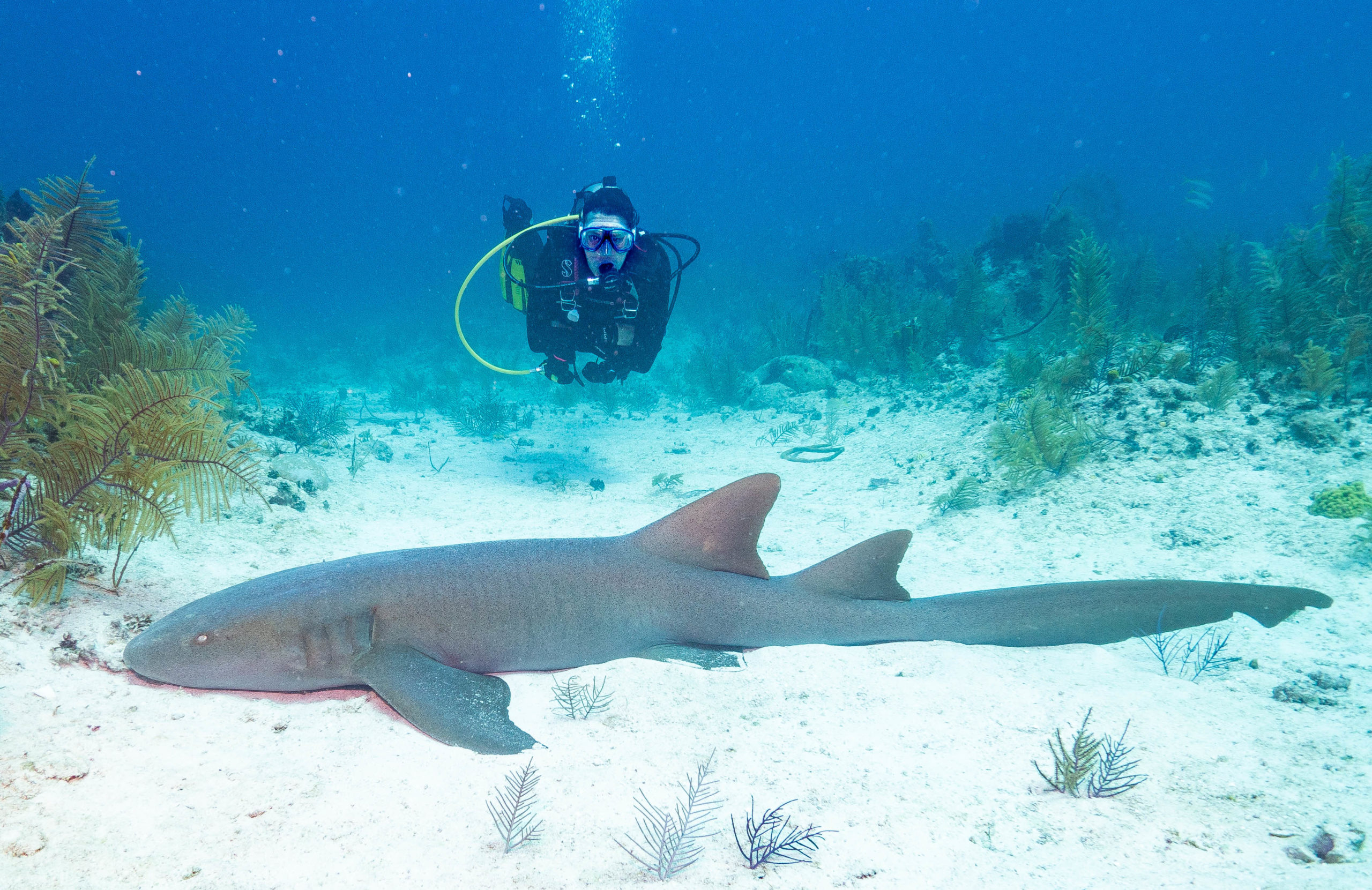
A large nurse shark rests on the ocean floor during the day. At night, the sharks hunt for food by flipping over rocks in search of crustaceans. Chris LeBlanc photo
I’m an experienced scuba diver, I remind myself, with about 500 dives in my logbook. Yet the scene unfolding beneath me during this night dive has my full attention.
Normally docile nurse sharks, which look like giant catfish and nap on the sandy bottom during the day, swirl along the ocean floor, shoving their heads under rocks in search of tasty crustaceans.
Related: Diving into French Polynesia’s dreamy Manihi
One of the nurse sharks is lying upside down, immobile in the sand. It’s in a state called tonic immobility that sometimes occurs when a shark gets flipped on its back. The other nurse sharks ignore it in their search for lobsters, bony fish and urchins.
I take my beam off the nurse sharks for a moment and pan the blackness around me with my light. A merry-go-round of Caribbean reef sharks, sleek and muscular, zoom in and out of my peripheral vision. They’re hunting for small fish, octopus and squid. Some are longer than me.
Sharks are an important part of the ecosystem. A healthy shark population is a good thing.
I watch, mesmerized, then signal to the others. It’s time to leave the sharks to their dinner party. We make our way back to the Turks & Caicos Explorer II, the live-aboard dive boat where I’m spending the week.
Trying a live-aboard dive trip
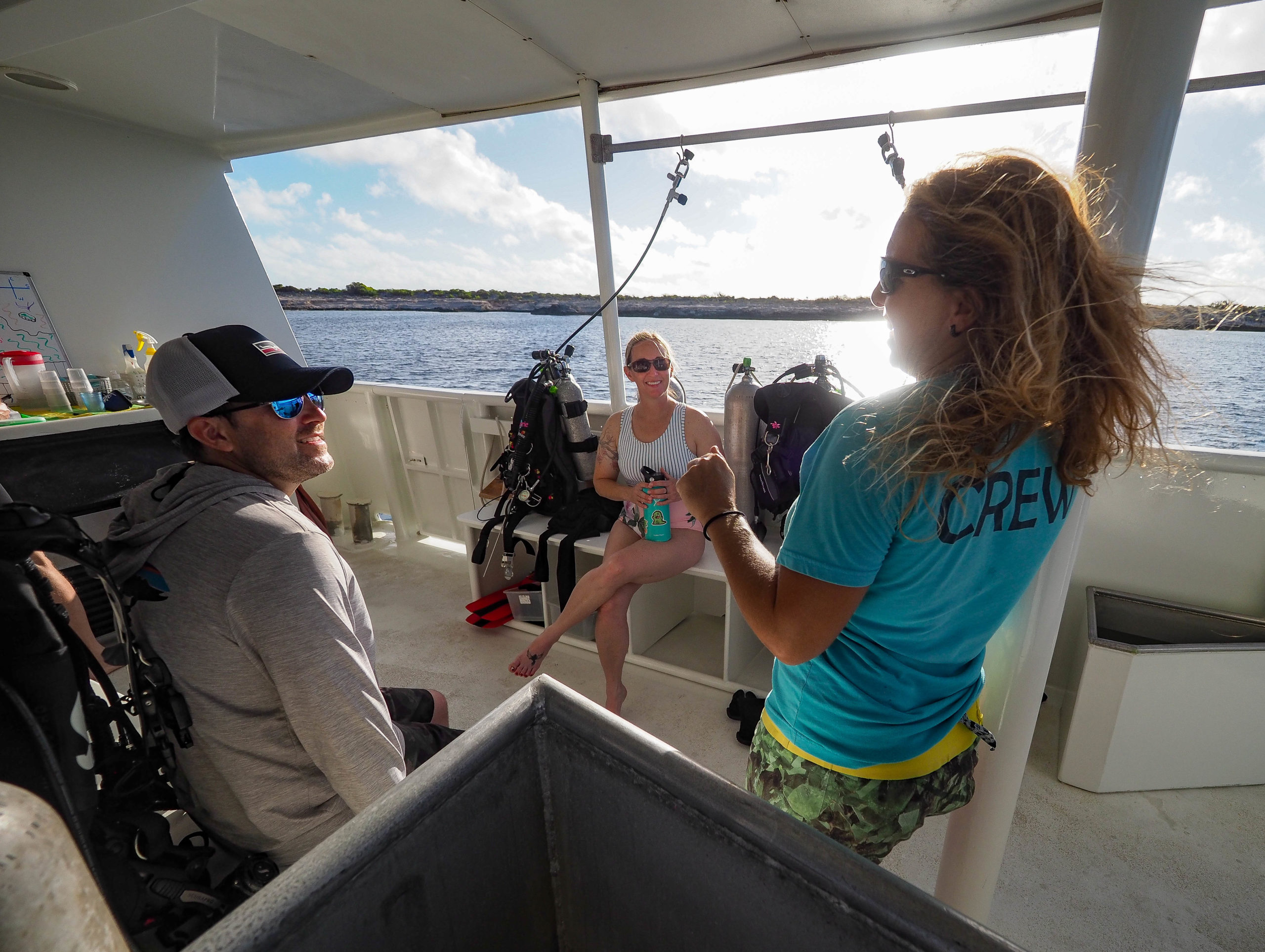
Dive master Jo Swannel, right, talks to two divers aboard the Turks and Caicos Explorer II. Pam LeBlanc photo
I learned to scuba dive about 25 years ago. At first, I’d stay in a hotel on shore and book a dive or two at a time from the local dive shop wherever I traveled. I’ve done this in Mexico, Honduras and the Cayman Islands.
Then someone suggested a live-aboard dive vacation, where passengers spend an entire week aboard a small boat, doing nothing but diving, eating and sleeping.
I wondered if I’d go stir crazy.
I didn’t; diving is so tiring that all I wanted to do was nap or read between dives.
Live-aboard dive trips aren’t for everyone. But if you’re happy making four or five dives a day like I am, I’d recommend trying one.
Related: A fall paddle down the Devils River
For me, it’s the pinnacle of relaxation. I don’t have to make any decisions other than whether I’m having a glass of wine with dinner or doing the night dive. (Once you have a sip of alcohol, you’re done diving for the day.)
The Turks & Caicos Explorer II
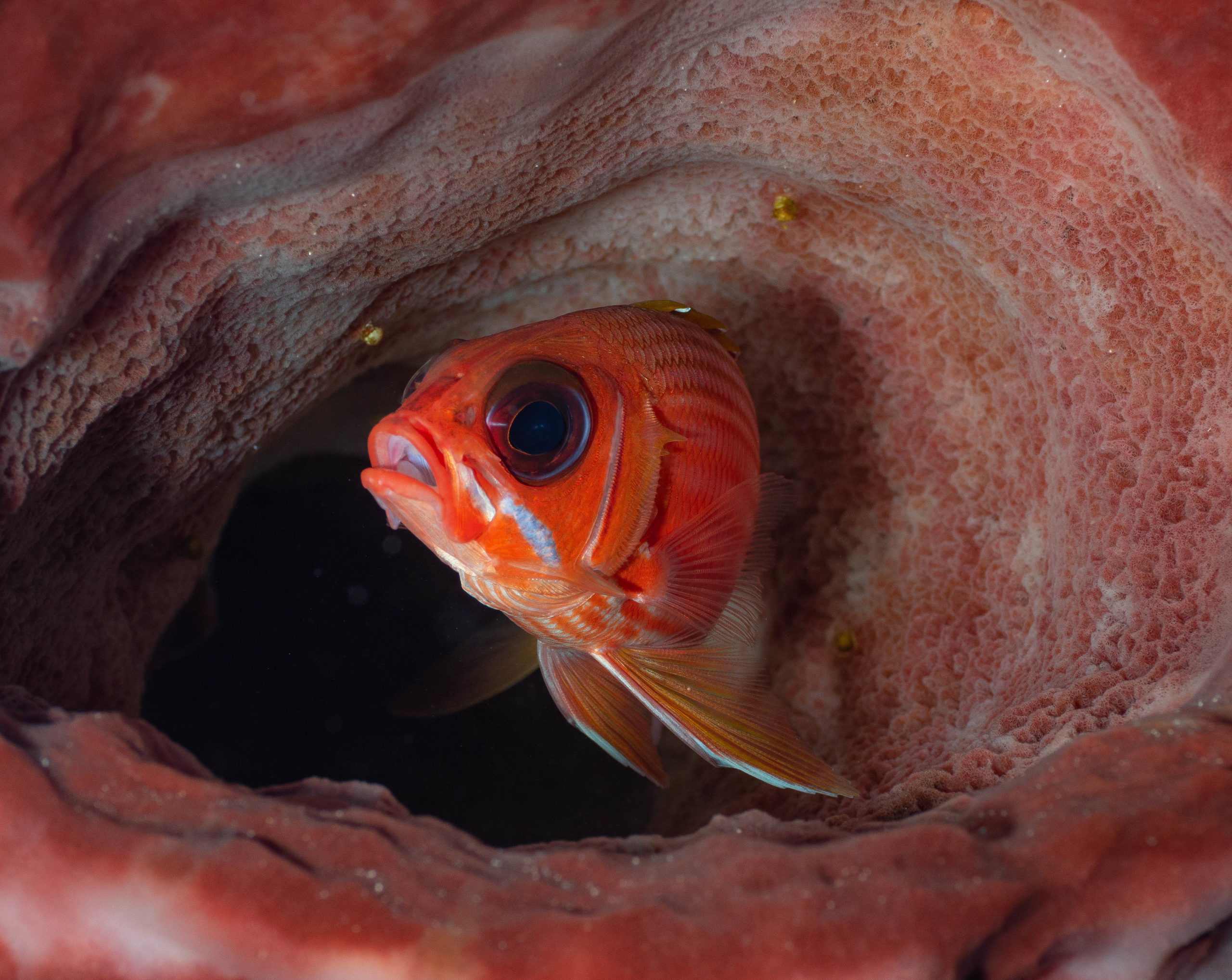
A squirrel fish hides in a sponge on the reef off the Turks and Caicos Islands. Pam LeBlanc photo
Schedules vary by boat, but days aboard the Turks and Caicos Explorer II begin with breakfast at 7:30 a.m. and the first dive of the day at 8:15 a.m.
Most days, we make two dives before lunch and two dives after lunch, with hour-long breaks in between. After dinner, there’s always a night dive option for those who skip the booze.
Every dive boat has a chef. Ours serves up an array of soups, salads and entrees like steaks, curries and fish dishes. She even delivers a special dessert on our anniversary.
Rooms are no-frills and snug; you’re staying on a boat, after all. There’s a bed (sometimes two bunks), a teeny marine bathroom with a toilet, shower and sink, and a couple of drawers to stash your clothes. Luckily, other than your own dive gear, you don’t need much on a dive trip.
Our trip in the Turks and Caicos Islands
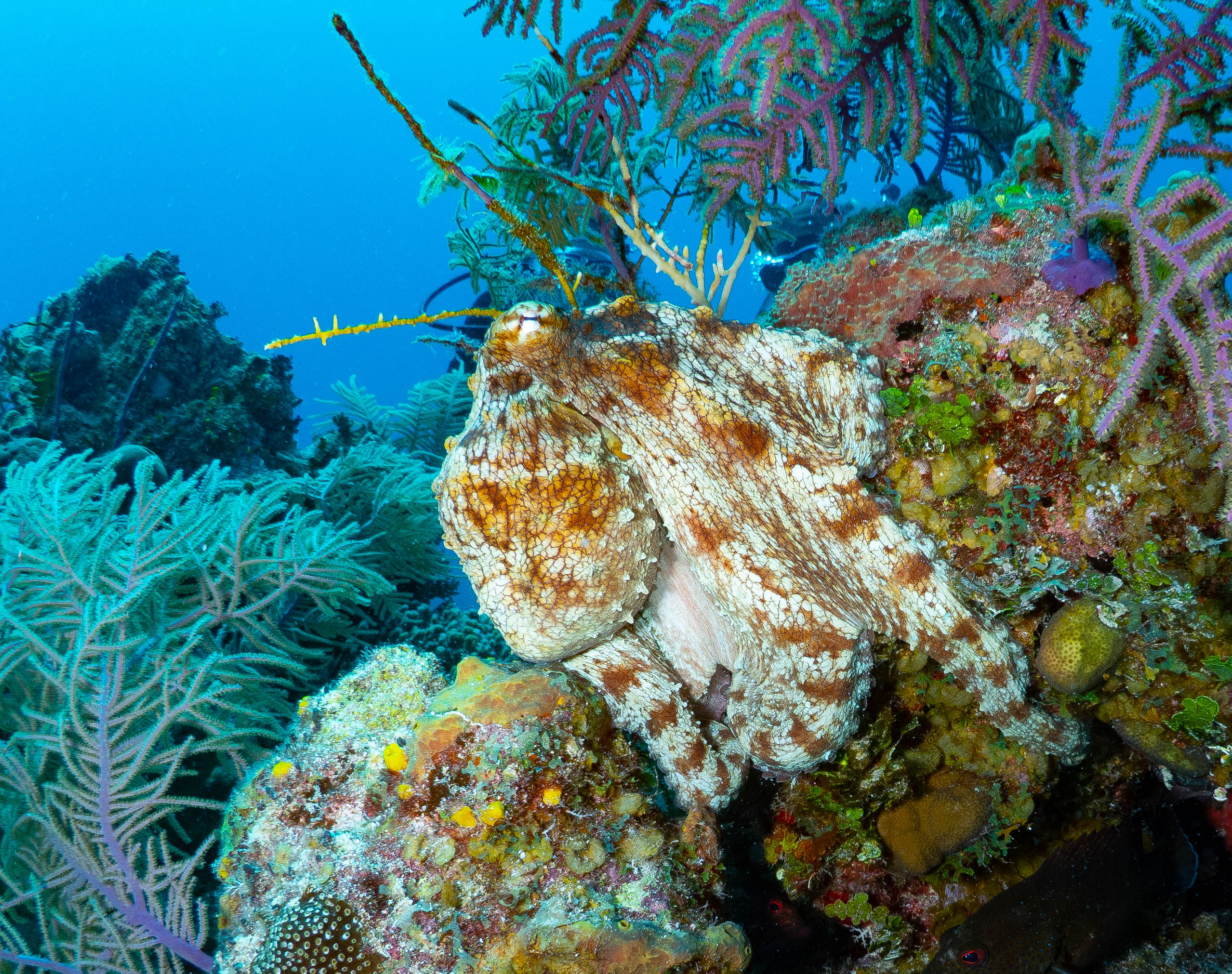
An octopus blends into the reef during a dive in the Turks and Caicos Islands. Chris LeBlanc photo
After arriving in Providenciales, we took a taxi to the marina, where we boarded our boat on a Saturday afternoon. We removed our shoes and dropped them in a basket; we wouldn’t need them for an entire week. Our trip had just five passengers, although the boat can hold 20.
During our week at sea, we had the option of 27 dives. We skipped three. Passengers who make every dive earn the Iron Diver Award. (Naps are sometimes more important than bragging rights, in my opinion).
What we saw in the Turks and Caicos Islands
The first dive set expectations high.
A pair of dolphins zoomed past, and a curious reef shark cruised by to check us out. We saw eels poking their heads out of the coral formations growing along the wall, where the water depth dropped from about 50 feet to about 100 feet. Lobsters waved their tentacles at us; huge crabs retreated into their holes.
The marine life was here, but the coral didn’t look as healthy as I remembered from my last visit to the Turks and Caicos 10 years ago. I remember thinking then that the reef here was among the healthiest looking that I’d seen.
Since then, I’ve scuba dived around the globe, from Fiji to the Galapagos Islands, all over the Caribbean, and around Hawaii. Coral reefs everywhere are in decline, stressed by warming water and human-caused pollutants. Here in the Turks and Caicos Islands, some of the coral was damaged in Hurricane Irma in 2017, our crew noted.
An array of creatures in the Turks and Caicos Islands
Still, we saw abundant marine life.
Tiny jawfish floated like ghosts above their holes in the sand, slender trumpetfish hid in coral branches, and a peacock flounder scooted across the bottom, purple spots appearing, then vanishing, on its flat, pancake-shaped body.
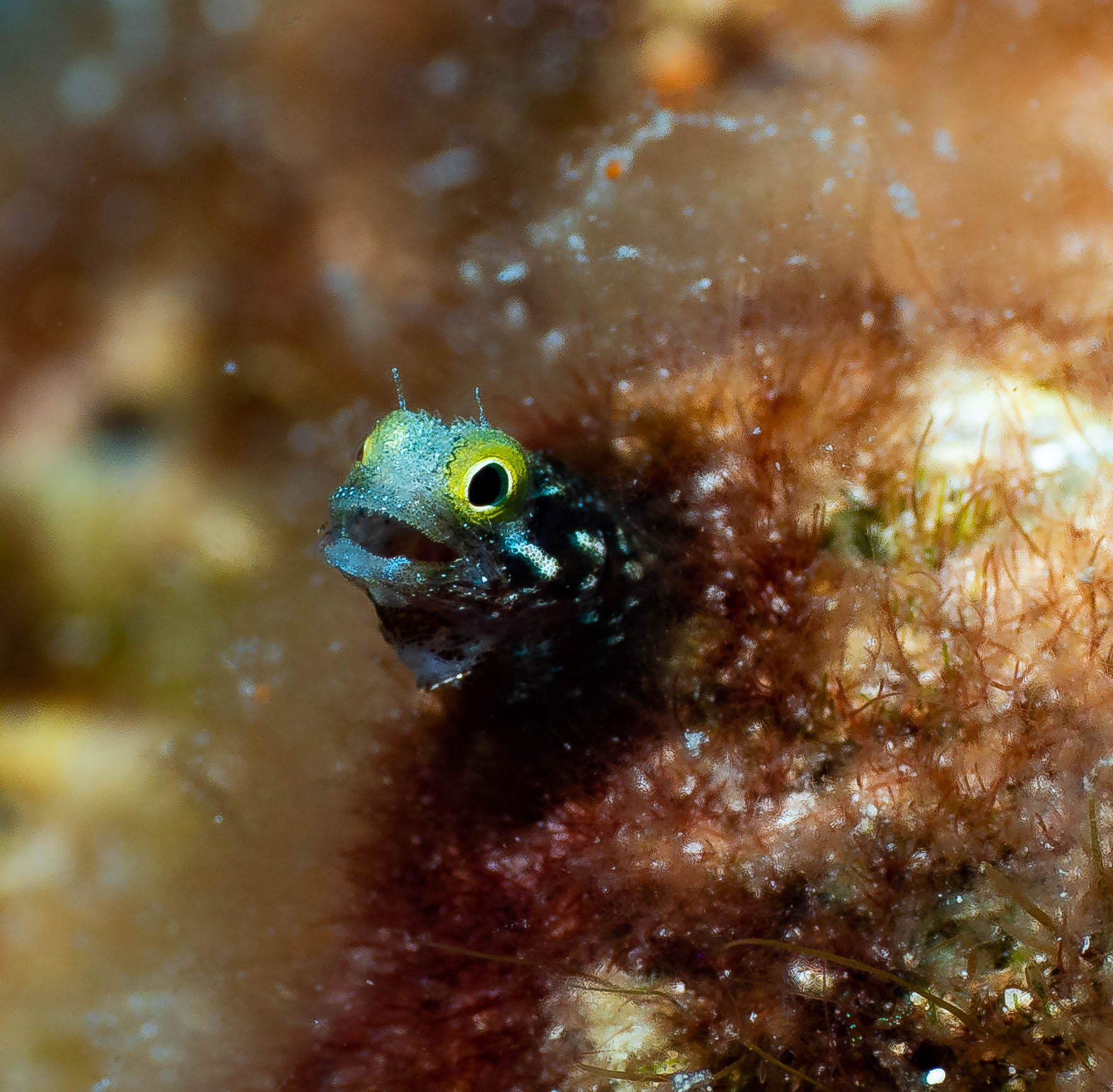
A secretary blenny, about the size of a pinkie fingernail, peeks out of a hole on an underwater structure. Pam LeBlanc photo
One day, we explored the wreckage of an underwater dome, a prop used in an old French reality television program. I didn’t expect to like the site, but it ranked among the best of the trip. That metal structure, abandoned some 25 years ago, now provides shelter to a host of tiny organisms. We looked closely and found tiny secretary blennies, with fat lips and wide eyes. Colorful flamingo tongues, a type of marine snail, clung to the coral. An octopus scurried out of a hidey-hole and scooted away, changing color as it went.
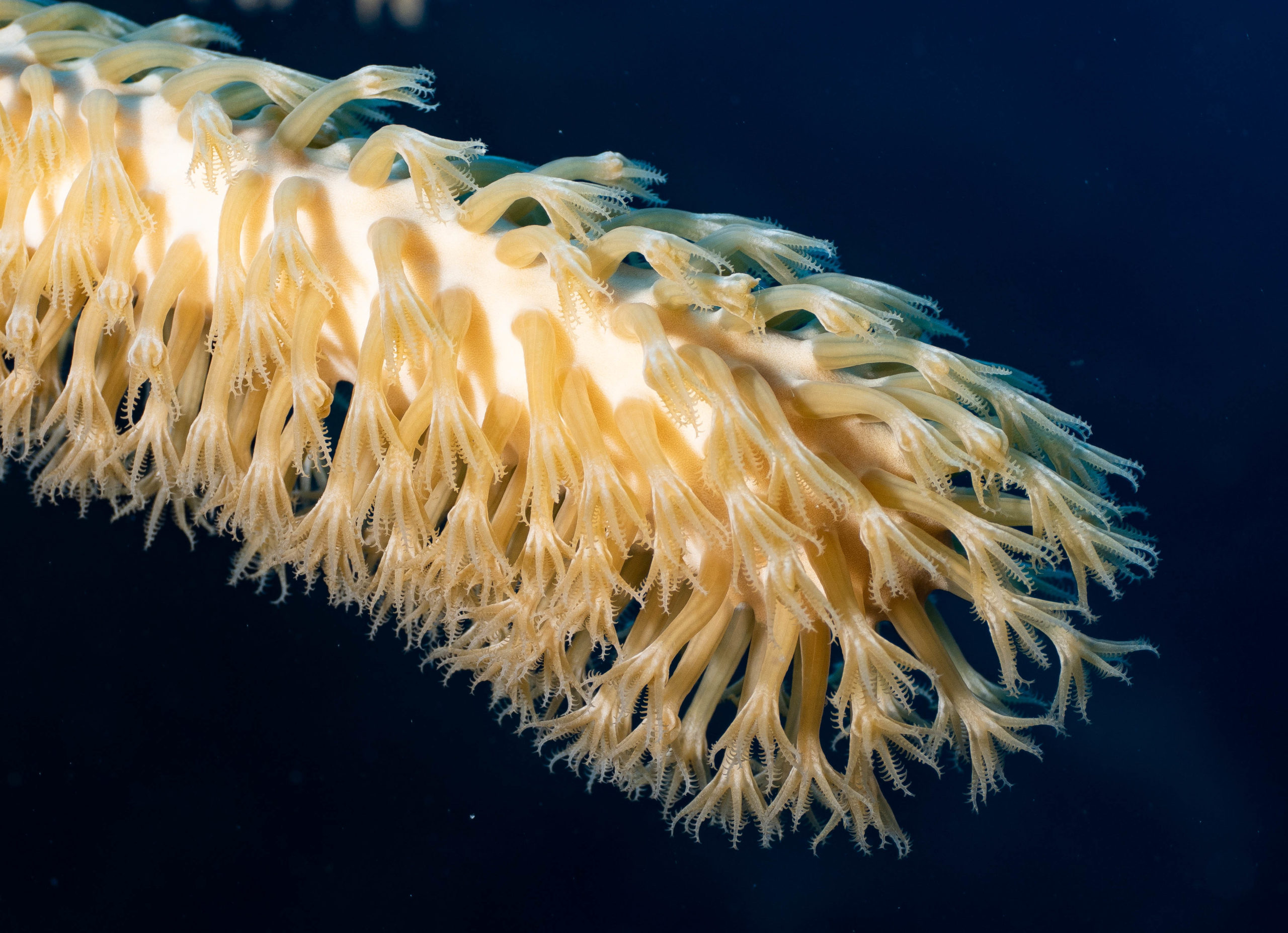
Coral is made up of individual polyps. Pam LeBlanc photo
On another dive, we found a squatty batfish, with a grumpy expression on its face. And on the last dive of the trip, a spotted eagle ray, a flying carpet of a creature decorated in purple spots, gracefully glided past.
Back to those sharks
In the end, I’m glad I did the night-time shark dive.
Watching big carnivores in action in their natural environment –– not being fed –– reminds me that wild things still exist. Humans, I think, spend too much time sitting in front of computer screens and sitting on couches.
We all need a few hungry predators in our lives.
If You Go

Getting there:
Fly from Austin to Providenciales, in the Turks and Caicos Islands, via American Airlines, Delta or United Airlines. You’ll have to connect through Atlanta, Houston, Dallas or Miami.

Stay:
A week aboard the Turks & Caicos Explorer II costs about $3,000 per person, not including a fuel surcharge, which you’ll have to pay on board. Sometimes Explorer Ventures, which operates dive boats around the Caribbean and beyond, offers deals. We caught a buy one, get one half off special.
Do:
Eat, sleep, dive. That’s it, and if you’re into diving, that’s all you want.
Eat & Drink:
The cost includes all meals, and you won’t starve. There’s breakfast, lunch and dinner, plus snacks like fresh-baked cookies or meat and cheese between meals. Beer, wine and liquor are included, too.

Pro Tip:
Don’t use sunscreen –– or at least use reef-safe sunscreen. Wear a rash guard or a wetsuit to cover exposed skin while you’re diving, and sunglasses and a hat to shield your face when you’re relaxing on the deck.










